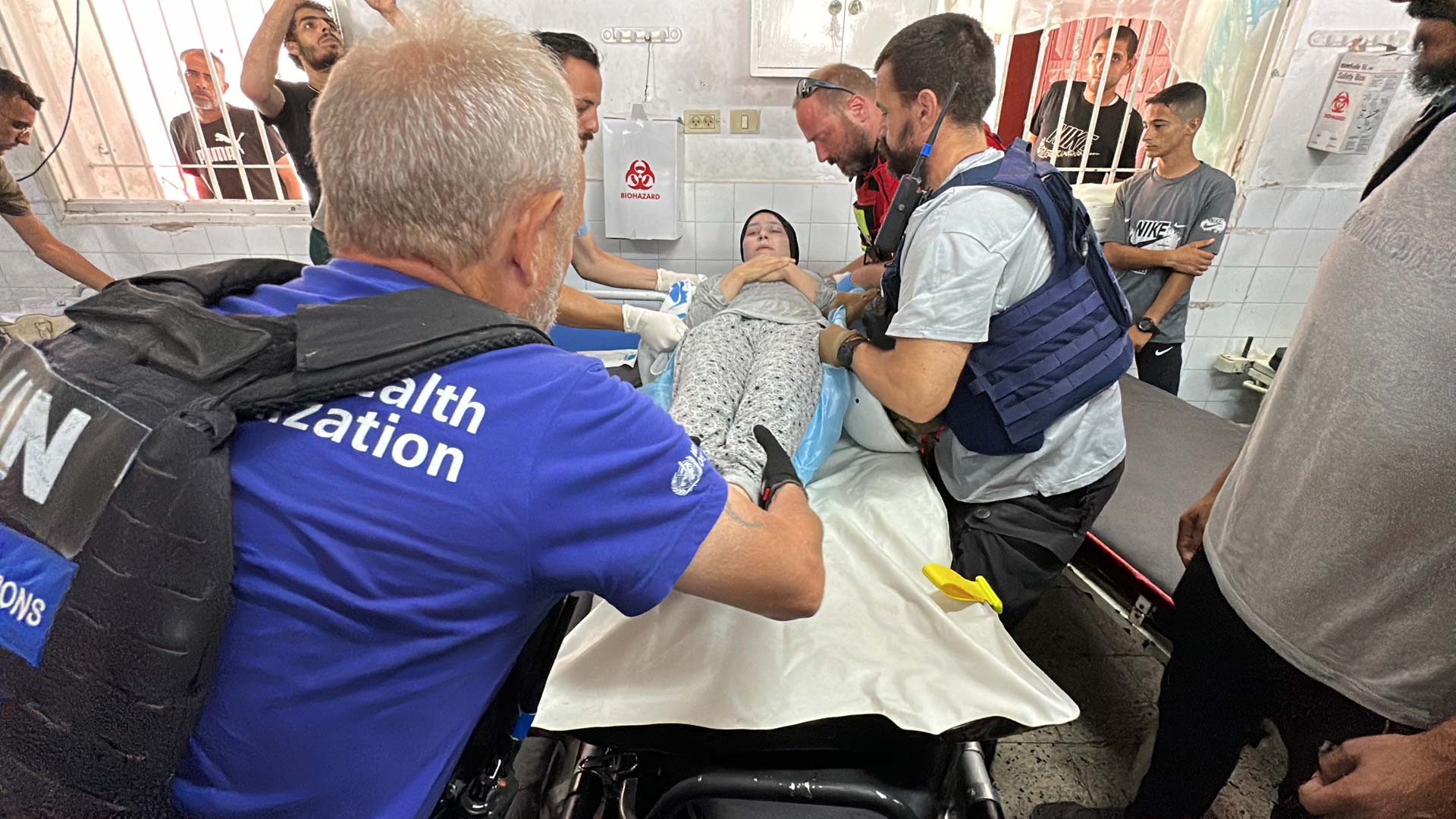
13 October 2025, Cairo, Egypt – As of June 2025, WHO was managing 16 graded emergencies across the Eastern Mediterranean Region. Multiple overlapping crisis had left over 115 million people in need of assistance– nearly a third of the global humanitarian burden.
In 2024, the Region experienced 80 disease outbreaks, more than double the number in 2021, of which 50 were still ongoing by September 2025. Six emergencies were classified as Grade 3, WHO’s highest crisis classification, including conflicts in the occupied Palestinian territory, Sudan, Lebanon and the Syrian Arab Republic. According to WHO’s Surveillance System for Attacks on Health Care, the Region accounted for 63% of the total of global attacks on health care between Jan – Dec 2024, with 1025 incidents resulting in 749 deaths and 1249 injuries.
Building resilience through a unified approach
Despite acute funding constraints, WHO maintained an all-hazards approach to managing emergencies, while anchoring its work in the humanitarian–development nexus.
The WHO Contingency Fund for Emergencies issued 5 awards totaling US$ 5.8 million, including support for responses in the occupied Palestinian territory, Lebanon, Syria and Sudan, and for cholera and dengue outbreaks.
Preparedness remained a top priority:
Risk profiling workshops were held in Jordan, Libya and Qatar, with more planned in Egypt, Iraq, Kuwait, Morocco and Tunisia;
A hospital resilience framework was roll out in Egypt, Oman, the occupied Palestinian territory, Syria and Yemen, with teams trained on the Hospital Safety Index;
A quadripartite regional multisectoral coordination platform was operationalized, and a regional Quadripartite One Health plan for 2025–2027 was endorsed.
Risk communication and community engagement initiatives were rolled out, including the Community Protection Framework and a regional repository of adaptable tools;
Mass gatherings preparedness, including risk assessments were supported for Hajj and the Arba’een;
Emergency medical teams (EMTs) were mentored for 6 countries and the Saudi Disaster Medical Assistance Team was classified as a Type 2 emergency medical team - the 53rd emergency medical team to be classified globally and the first in the Region.
Seven countries in the region successfully accessed around US$ 128 million from the Pandemic Fund, securing resources to strengthen pandemic preparedness and response capacities, including for surveillance, laboratory systems, and workforce development. Implementation has begun and is progressing successfully in six of the seven countries.
Rapid and effective detection of and response to public health threats
Early detection, assessment and response to acute public health events and emergencies remained an important area of focus:
Between 1 July 2024 and 30 April 2025, 2500 signals of potential threats were captured, 160 of which warranted verification; 24 of these were new public health events that WHO monitored, while 15 led to rapid risk assessments and public health situation analyses.
A joint project by WHO and the United States Centers for Disease Control saw the notification rate for acute public health events by International Health Regulations (IHR) national focal points increase from 28% in 2022 to 43% in 2024.
Multistakeholder national governance bodies for surveillance were established in 14 countries, and 12 countries have developed national roadmaps for integrated disease surveillance.
WHO helped contain multiple outbreaks across the Region, ensuring that 8 of 9 cholera outbreaks in 2024–2025 had a case fatality rate below 1%, aligning with international standards.
Country-level impact
Last year, WHO’s Global Health Emergencies Logistics Hub in Dubai delivered 591 emergency orders to 76 countries, with the vast majority (70%) going to Eastern Mediterranean states.
Through Egypt, WHO delivered USD 32.9 million medical supplies into Gaza — 60% of all medical supplies that reached the Strip — supporting 25 health partners
WHO supported nearly 630 stabilization centres in Afghanistan, Pakistan, Palestine, Somalia, Sudan, Syria, and Yemen, providing treatment for 326,000 children under 5 with severe acute malnutrition and achieving cure rates averaging 92%, well above the international standard of 75%.
In Gaza, despite extreme access restrictions, WHO enabled continuity of care by delivering 11.9 million litres of fuel, 3000 metric tons of supplies, and supporting 6.3 million treatments and surgeries, while evacuating over 5500 critically ill patients.
In Sudan, WHO sustained services in conflict-affected areas, supporting 138 nutrition centres, delivering 11.6 million cholera vaccine doses, and responding to cholera, measles, dengue, and malaria outbreaks, even with only 38% of health facilities functional.
Following the displacement of more than 800 000 people in Lebanon, WHO delivered US$ 4.4 million worth of medical supplies and supported mass casualty drills across 112 hospitals and health facilities.
In Syria, where 16.5 million are in need of aid, WHO provided equipment, trained 2000+ health workers in suicide prevention and vaccinated 25 000+ against cholera.
In Afghanistan, WHO-supported programmes have reached 8 million+ people and treated 54,000+ children with severe acute malnutrition.
In Yemen, WHO responded to flooding and cholera outbreaks, supporting over 25 000 rapid response team missions to investigate alerts and initiate control measures and 100+ therapeutic feeding centres reaching over 31 220 severely malnourished children with complications.
The way forward
While progress has been made in surveillance, preparedness and response, emergencies across the Region continue to impact millions. The Region’s IHR capacity score has stagnated since 2018 – a result of underinvestment, competing priorities and fragmented systems, especially in conflict-affected settings.
The latest WHO report highlights the urgent need for sustained commitment, strategic investment and coordinated action to protect lives and build resilient health systems that are able to respond to future shocks.








